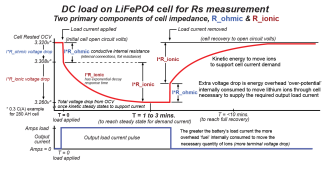frankz66
New Member
Hi everyone, I know for sure that the references si soc are highly indicative but it is necessary to rely on the voltage detected on the regulator to get an idea of the charge in place. It would be appropriate to check its status by shunt and ammeter, but in any case the voltage read on the regulator or on the epever software gives me a approximate indication of the status.
My system is a test and pleasure plant, so at the moment I do tests to check the operation ....
I wanted to have your opinion on the tests carried out.
At the time of the cut out, I find myself reading on the regulator a voltage of 12.60 and a soc of 57 % (let's forget the soc) with a small load of just 30 watts + 10 watts of inverter. By turning on an example of a TV, I find a total load of about 81 watts, which I read in the LCD instrument of my ammeter. Starting from a residual charge of 48 % always of soc .... After about 2 hours I find myself a difference of only 6 % less with an accumulation of 330 amps at 12v.
As soon as I turn off the loads leaving only 38 watts, I see that the voltage of the batteries e.g. 12.20 begins to rise to 12.28, as if it resumed to have voltage.
I ask as a beginner if this variation is normal for it to come back once consumed? I would expect that once the power is consumed after 2 hours of almost 95 watts the voltage will not be able to rise. I know we are talking about poor 10 mv but this makes a difference in the perception of consumption.
Could it be that the load is almost at the limit for the characteristics of the batteries and therefore after dispensing current they return to tension?
The batteries in parallel are 3 from 110 amps 12v c100
My system is a test and pleasure plant, so at the moment I do tests to check the operation ....
I wanted to have your opinion on the tests carried out.
At the time of the cut out, I find myself reading on the regulator a voltage of 12.60 and a soc of 57 % (let's forget the soc) with a small load of just 30 watts + 10 watts of inverter. By turning on an example of a TV, I find a total load of about 81 watts, which I read in the LCD instrument of my ammeter. Starting from a residual charge of 48 % always of soc .... After about 2 hours I find myself a difference of only 6 % less with an accumulation of 330 amps at 12v.
As soon as I turn off the loads leaving only 38 watts, I see that the voltage of the batteries e.g. 12.20 begins to rise to 12.28, as if it resumed to have voltage.
I ask as a beginner if this variation is normal for it to come back once consumed? I would expect that once the power is consumed after 2 hours of almost 95 watts the voltage will not be able to rise. I know we are talking about poor 10 mv but this makes a difference in the perception of consumption.
Could it be that the load is almost at the limit for the characteristics of the batteries and therefore after dispensing current they return to tension?
The batteries in parallel are 3 from 110 amps 12v c100






